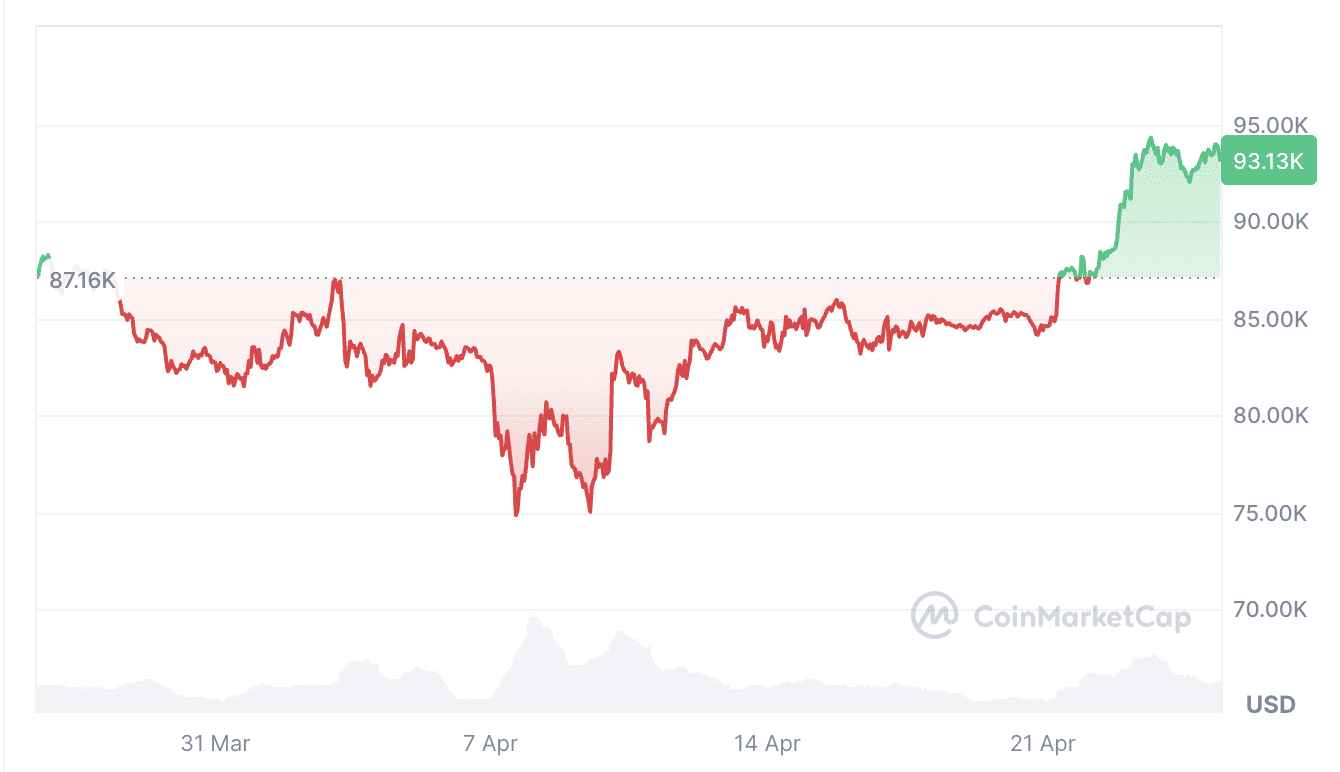Key Points:
- The Crypto Fear & Greed Index, a measure of market sentiment, reached a two-month high, entering “Greed” territory in late April but has since begun to fall.
- Bitcoin’s dominance remains strong, supported by significant ETF inflows, despite a weak altcoin season.
- Analysts are voicing caution about the sustainability of Bitcoin’s rally, pointing to indicators like stablecoin minting activity.
Bitcoin’s recent surge, which pushed the cryptocurrency above $90,000, initially sparked a wave of optimism in the crypto market. The Crypto Fear & Greed Index, a popular gauge of market sentiment, reflected this euphoria, climbing to its highest level in two months. However, this positive sentiment appears to be waning, even as Bitcoin’s price remains relatively stable. This divergence between price and sentiment has prompted analysts to question the long-term viability of the current rally.
Decoding the Crypto Fear & Greed Index
The Crypto Fear & Greed Index aggregates data from various sources to assess the overall sentiment of the cryptocurrency market. A score of 0 indicates extreme fear, while a score of 100 signifies extreme greed. A high score often correlates with market peaks, while low scores can indicate buying opportunities during market dips.
In late April, the index reached a score of 72, placing it firmly in the “Greed” zone. This coincided with Bitcoin’s resurgence above the $90,000 mark. However, within days, the index retreated to around 60, suggesting a cooling of enthusiasm despite Bitcoin’s continued price stability.
Reasons Behind the Shifting Sentiment
Several factors may be contributing to the declining sentiment. Analysts point to a few key indicators:
- Stablecoin Minting Activity: Some analysts closely monitor the minting of stablecoins, cryptocurrencies pegged to a stable asset like the US dollar. Increased stablecoin minting can indicate fresh capital entering the crypto market, fueling further price increases. However, if minting activity remains low, it can suggest a lack of new investment and potentially signal a weakening rally.
- Bitcoin Dominance: Bitcoin’s dominance, the percentage of the total crypto market capitalization attributed to Bitcoin, remains high. This indicates that altcoins (alternative cryptocurrencies) are underperforming relative to Bitcoin. A strong Bitcoin dominance can suggest that investors are prioritizing Bitcoin as a safe haven rather than exploring riskier altcoin investments.
- ETF Inflows: Inflows into Bitcoin ETFs (Exchange Traded Funds) have been a major driver of Bitcoin’s price appreciation. Continued strong inflows suggest sustained institutional interest, while a slowdown in inflows could raise concerns about future price growth.

Analyst Perspectives
The mixed signals from the market have led to differing opinions among analysts.
Some analysts, like Markus Thielen from 10x Research, remain cautious, citing the lack of significant stablecoin minting as a reason to doubt the rally’s sustainability. They believe that without fresh capital entering the market, the rally may lose momentum.
Bitfinex analysts have also noted Bitcoin’s relative strength against US equities but emphasize that it is still too early to confirm this as a long-term trend.
On the other hand, some analysts are more optimistic. Michaël van de Poppe, founder of MN Trading Capital, believes that buyers are likely to step in and continue the upward trajectory towards a new all-time high.
Bitcoin’s Current Market Position
As of late April, Bitcoin is trading in a range between $91,800 and $94,304. The market remains heavily Bitcoin-focused, with the Bitcoin dominance index hovering around 64%. While Bitcoin ETFs have seen significant inflows, the altcoin season index remains low, indicating a lack of broad-based enthusiasm for altcoins.
The Bottom Line
While Bitcoin’s price remains elevated, the declining sentiment, as reflected in the Crypto Fear & Greed Index, suggests a degree of uncertainty among investors. Factors such as stablecoin minting activity, Bitcoin dominance, and ETF inflows will likely continue to play a crucial role in shaping market sentiment and influencing Bitcoin’s price trajectory.